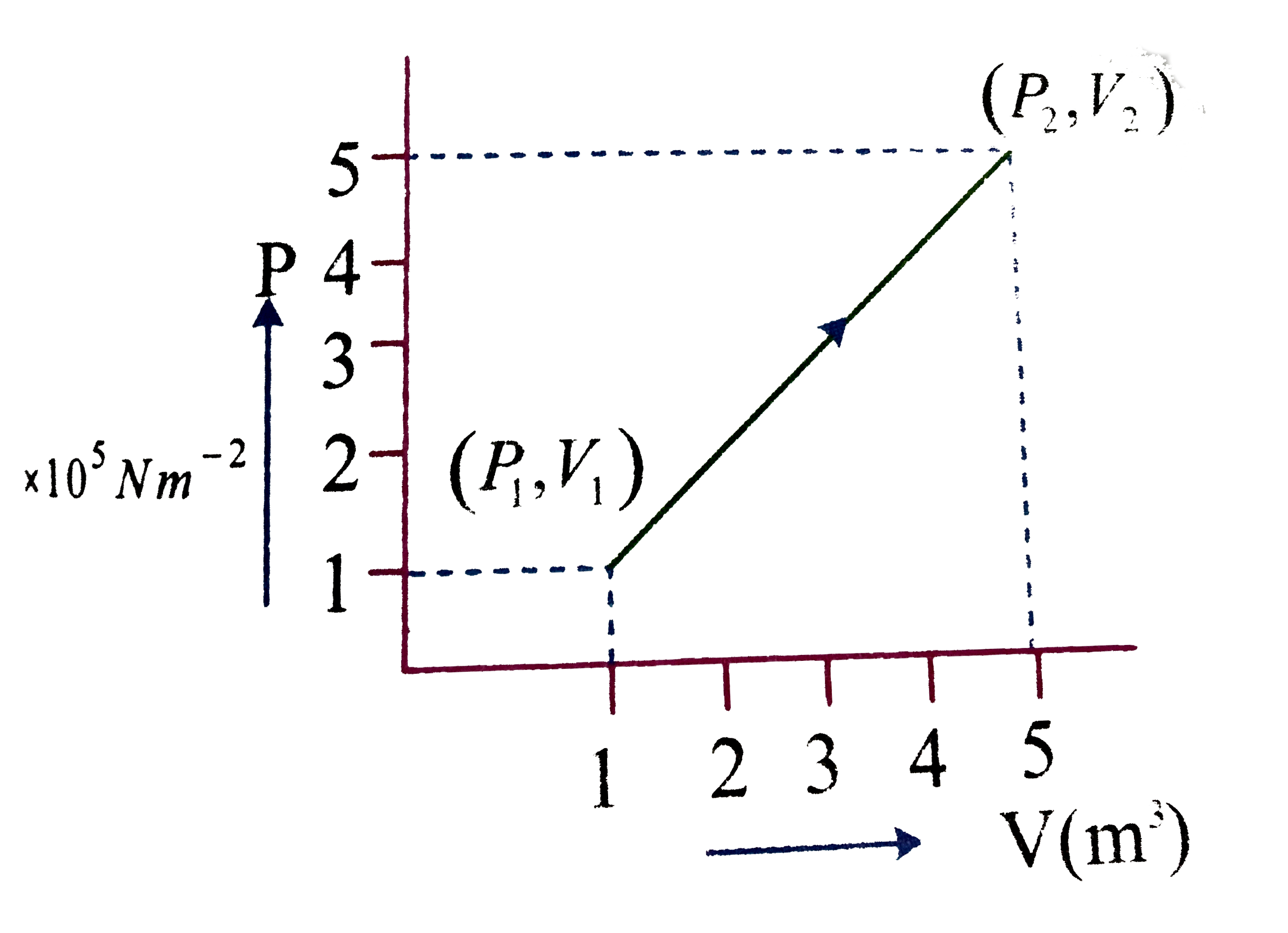समीकरण p1Vγ1=p2Vγ2 रुद्धोष्म प्रक्रिया के लिए मान्य है, जहाँ γ = …....|
The correct Answer is:CP/CV
Step by step video, text & image solution for समीकरण p_(1)V_(1)^(gamma)=p_(2)V_(2)^(gamma) रुद्धोष्म प्रक्रिया के लिए मान्य है, जहाँ gamma = …....| by Physics experts to help you in doubts & scoring excellent marks in Class 11 exams.
Topper's Solved these Questions
- BOOK - DAS GUPTACHAPTER - ऊष्मागतिकी : गैसों की विशिष्ट ऊष्मा-धारिताएँEXERCISE - प्रश्नावली (अतिलघु उत्तरीय प्रश्न)11videos
ऊष्मागतिकी : गैसों की विशिष्ट ऊष्मा-धारिताएँ
- BOOK - DAS GUPTACHAPTER - ऊष्मागतिकी : गैसों की विशिष्ट ऊष्मा-धारिताएँEXERCISE - प्रश्नावली (लघु उत्तरीय प्रश्न)13videos
ऊष्मागतिकी : गैसों की विशिष्ट ऊष्मा-धारिताएँ
- BOOK - DAS GUPTACHAPTER - ऊष्मागतिकी : गैसों की विशिष्ट ऊष्मा-धारिताएँEXERCISE - प्रश्नावली (वस्तुनिष्ठ प्रश्न )32videos
ऊष्मागतिकी : गैसों की विशिष्ट ऊष्मा-धारिताएँ
- BOOK - DAS GUPTACHAPTER - ऊष्मा तथा तापEXERCISE - प्रश्नावली ( लघु उत्तरीय प्रश्न)4videos
ऊष्मा तथा ताप
- BOOK - DAS GUPTACHAPTER - कार्य, शक्ति और ऊर्जा EXERCISE - प्रश्नावली ( आंकिक प्रश्न)6videos
कार्य, शक्ति और ऊर्जा
Similar Questions
ऊष्मागतिक साम्यावस्था में क्या - क्या साम्य होता है ?
04:55View Solutionऊष्मागतिकी के प्रथम नियम बताएँ।
05:20View Solutionऊष्मागतिकी के प्रथम नियम में संरक्षित ( conserved ) रहता है
02:02View Solutionतापमापीय पदार्थ (thermometric substance) के रूप में गैस के उपयोग के क्या लाभ है?
01:54View Solutionक्षैतिज सड़क पर 155kmh−1 की चाल से चलनेवाली कोई कार 200 N के अबरोधक बल का सामना कर रही हो, तो उसके इंजन की न्यूननम शक्ति क्या होनी चाहिए?
02:34View SolutionIf alpha,beta,gamma are the roots of the equation,x^(3)+P_(0)x^(2)+P_(1)x+P_(2)=0 ,then (1-alpha^(2))(1-beta^(2))(1-gamma^(2)) is equal to
03:53View SolutionThe initial volume of an ideal gas is V1 and the initial pressure is P1=6 atmosphere. It expands isothermally to a volume V2 and pressure P2=3atm, and then adiabatically to a volume V3 and pressure P3=2atm. Draw a rough sketch of these changes. Calculate the value of V2/V1andV3/V2.
Take γ=1.4.05:23View SolutionThe pressure and density of a monoatmic gas (gamma=5//3) change adiabatically from , (P_(1),d_(1)) to (P_(2),d_(2)) .If (d_(2))/(d_(1))=8 then (P_(2))/(P_(1)) should be
View SolutionA system changes from the state (P1,V1) to (P2V2) as shwon in the diagram. The workdone by the system is
 View Solution
View SolutionA gas with (c_(p))/(c_(V))=gamma goes from an intial state (p_(1), V_(1), T_(1)) to a final state (p_(2), V_(2), T_(2)) through an adiabatic process. The work done by the gas is
05:56View SolutionThe pressure P1 and density d1 of a diatomic gas (γ=75) change to P2andd2 during an adiabatic operation .If d2d1=32,thenP2P1 is
02:50View SolutionIf α,β,γ,δ are the roots of x4+p1x3+p2x2+p3x+p4=0. Then sum of the products of roots taken two at a time A) αβ+αγ+αδ+βγ+βδ+γδ=p1 B)αβ+αγ+αδ+βγ+βδ+γδ,=p2 C)αβ+αγ+αδ+βγ+βδ+γδ,=p3 D)αβ+αγ+αδ+βγ+βδ+γδ=p4
View SolutionAn ideal gas expands from state (P_(1), V_(1)) to state (P_(2), V_(2)) , where P_(2) = 2P_(1) and V_(2) = 2V_(1) . The path of the gas is expressed by the following relation, P = P_(1) [1 + ((V - V_(1))/(V_(1)))^(2)]
02:59View SolutionWhich of the following expression represent the work done in reversible adiabatic expansion of gas. (i) w=nRγ−1(T2−T1),
(ii) w=P2V2−P1V1γ−1
(iii) w=n(Cp+R)ΔT01:54View SolutionEstablish gas equation, (P_(1)V_(1))/(T_(1))=(P_(2)V_(2))/(T_(2)) .
View SolutionA sample of gas changes from p1,V1 and p2. V2andT2 by one path and then back to p1,V1andT1. ΔU for the process is :
02:03View Solution

